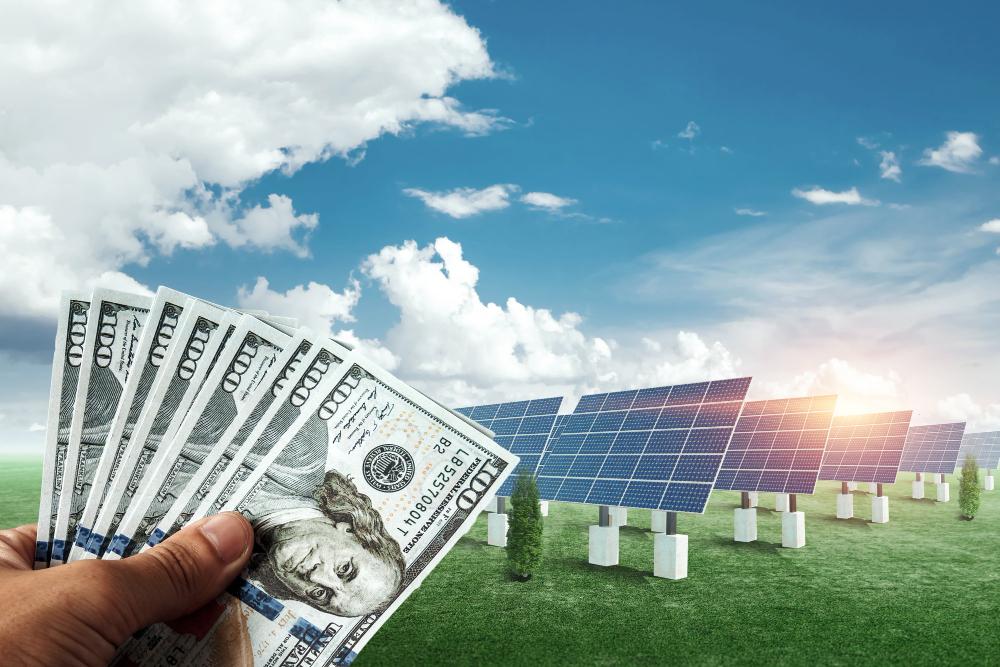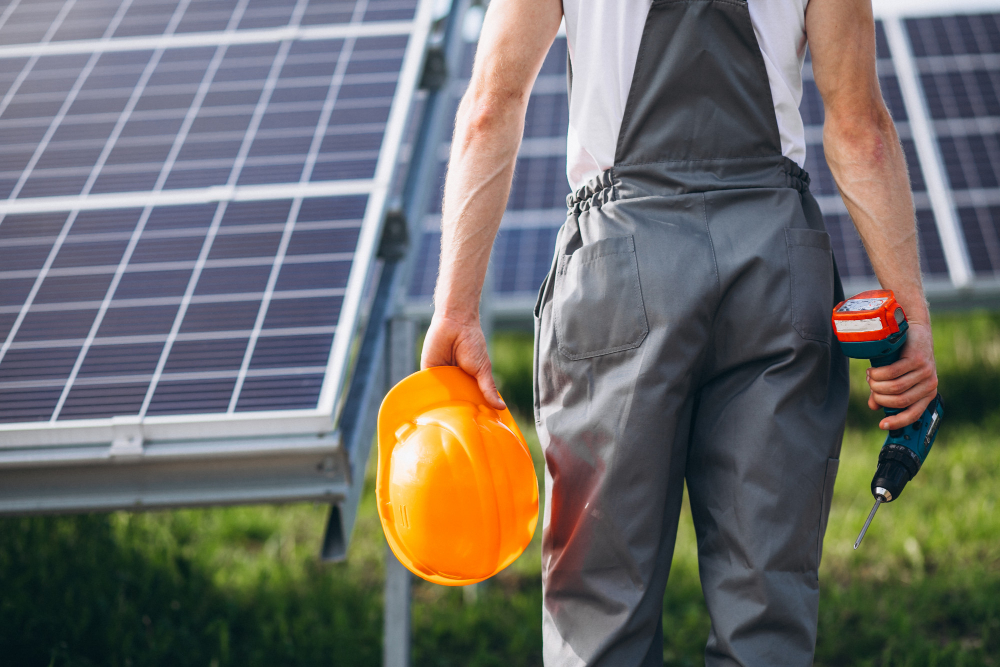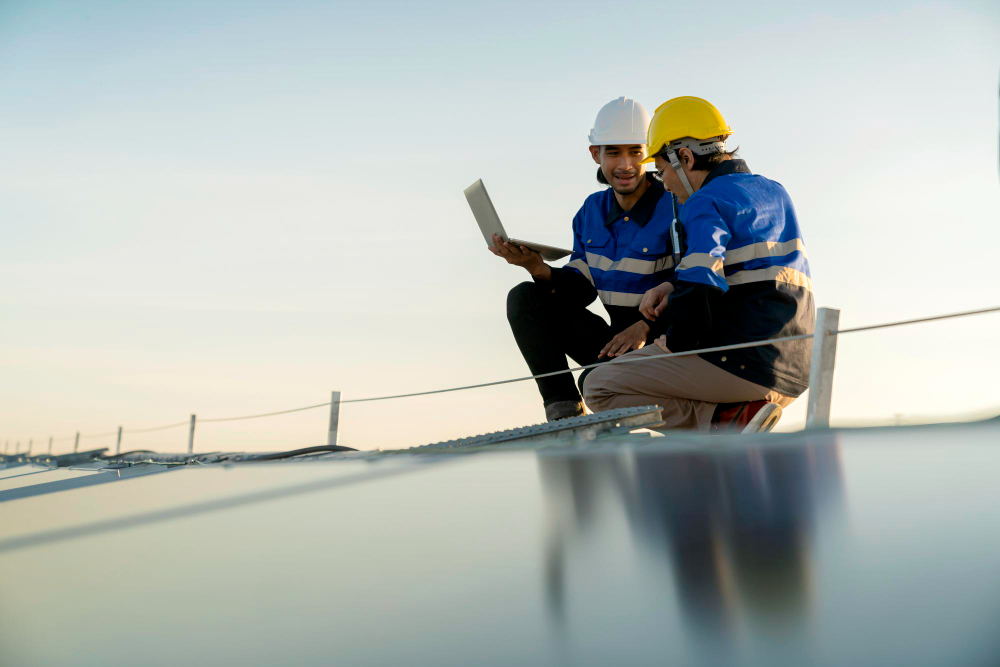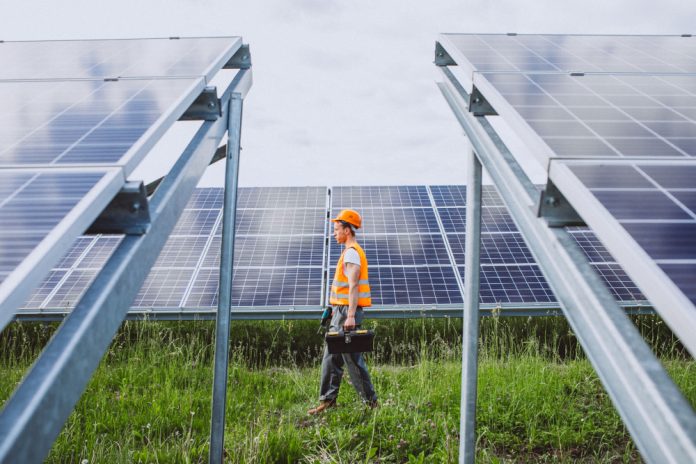Did you know that 55% of the world’s new renewable energy is now solar?
You’ve heard about solar power, and you’re interested in learning more, but you don’t know where to start. Solar power can help reduce your carbon footprint and save you money on your energy bill. But it can be confusing to figure out which solar system is right for you.
Bifacial solar panels are the latest advancement in solar technology. They offer several advantages over traditional solar panels, including increased efficiency and lower installation costs.
But that’s not all. Keep reading our solar panel guide to learn the full depth of advantages of bifacial solar panels.
Table of Contents
What Are Bifacial Solar Panels?
Bifacial solar panels are a type of solar panel that can absorb sunlight from both the front and backside. This allows them to generate more electricity than traditional solar panels.
They make bifacial solar panels with a clear back sheet that allows sunlight to pass through to the back of the panel. The backside of the panel is usually coated with a material that reflects sunlight.
This helps to increase the amount of sunlight that is absorbed by the panel. Additionally, bifacial solar panels are often mounted on a tracking system that allows them to follow the sun throughout the day.
This ensures that the panel is always in the optimal position to absorb sunlight. As a result, bifacial solar panels can generate significantly more electricity than traditional solar panels.
What Are the Advantages of Bifacial Solar Panels?
There are several advantages of bifacial solar panels. They include:
Increased Efficiency
Traditional solar panels are typically only able to capture light from one side, as the backside is usually blocked by the frame or other parts of the panel. Bifacial solar panels, on the other hand, can capture light from both sides.
This results in a significant increase in efficiency, as more sunlight is being converted into electricity. Bifacial solar panels can capture up to 30% more sunlight than traditional panels.
This not only results in more electricity generated but also less wear and tear on the panel, as it is not being hit by as much direct sunlight. As a result, bifacial solar panels are an excellent option for those looking to increase their solar panel efficiency.
Reduced Cost

Bifacial solar panels are more efficient than traditional solar panels, and as a result, they have a lower cost per watt. This makes them more affordable for consumers, and it also makes them more attractive to businesses and utilities.
In addition, bifacial solar panels can be mounted on rooftops or on the ground, making them more versatile than traditional solar panels. As the cost of traditional solar panels continues to decline, bifacial solar panels are likely to become even more popular.
Increased Reliability
Bifacial solar panels are a newer technology that offers many advantages over traditional panels. One of the biggest advantages is that they are less likely to experience power loss due to shading, dirt, or snow build-up.
This results in increased reliability and decreased maintenance costs. Bifacial panels can convert more sunlight into electricity. They also last longer than traditional panels.
Because of this, bifacial solar panels are a good choice for people who want to save money on their energy costs and help the environment.
Increased Lifespan
The average lifespan of a solar panel is around 25 years. However, bifacial solar panels have a significantly longer lifespan due to their increased durability.
They make bifacial solar panels with two layers of tempered glass, which makes them much more resistant to breakage. In addition, the transparent back sheet used in bifacial solar panels helps to protect the cells from moisture and corrosion.
As a result, bifacial solar panels are less likely to experience power loss over time and can provide a reliable source of energy for many years to come.
Aesthetically Pleasing
Bifacial solar panels are a newer technology that has some advantages over traditional solar panels. One of the biggest advantages is that they look nicer than solar panels.
This is because they blend in with the roofline of a home or business. This is because bifacial solar panels have a clear back surface that allows them to reflect the roofline, making them less noticeable.
Small Installation Space
Bifacial solar panels are a type of photovoltaic cell that can absorb light from both the front and the back. This allows you to install them in a smaller space than traditional solar panels due to their increased efficiency.
In addition, bifacial solar panels can also be used to create solar towers, which are more efficient than flat-panel arrays. Solar towers use mirrors to reflect and concentrate sunlight onto the cells, providing a boost to their efficiency.
As a result, bifacial solar panels offer several advantages over traditional solar panels.
Easy to Install

Bifacial solar panels are becoming increasingly popular due to their easy installation. You don’t need any special equipment, so anyone can do it. That’s one of the reasons why they’re becoming so popular.
Their durable design means that they can withstand all kinds of weather. Their flexibility means that you can install it on a variety of roof types.
If you’re ready to get solar panels installed, only work with a top solar company that will make the whole process simple and easy for you.
Environmentally Friendly
As the world increasingly turns to renewable energy sources, solar power has emerged as one of the most promising options. Solar panels are now common sights on rooftops and in open fields, providing a clean source of electricity.
However, traditional solar panels may not be the most environmentally friendly option. Bifacial solar panels, which are also known as double-sided solar panels, offer a more sustainable solution.
These panels can generate power from both the front and back sides, making them more efficient than traditional panels. In addition, bifacial panels do not require the use of harmful chemicals, making them a cleaner option.
As the world moves towards a more sustainable future, bifacial solar panels will play an important role in generating clean, renewable energy.
Safe for Animals and Plants

These panels are safe for animals and plants as they do not emit harmful chemicals or radiation. Bifacial solar panels are also less likely to cause glare, which can be harmful to both humans and animals.
In addition, bifacial solar panels are less likely to reflect light, which can be damaging to plant life. As a result, bifacial solar panels are a safe and environmentally friendly option for generating electricity.
Back Energy Production in Bad Weather
In the past, solar panels have been largely dependent on sunlight to generate electricity. However, advances in technology have led to the development of bifacial solar panels, which can capture light from both the front and back.
This means that they can still produce electricity during bad weather, such as cloudy days or in the shade. Additionally, bifacial solar panels are often able to produce more electricity than traditional solar panels.
As a result, they have the potential to play a major role in the future of renewable energy.
Increased Self-Consumption
As the demand for clean energy increases, so does the need for efficient solar panels. Bifacial solar panels are a type of panel that can absorb light from both the front and backside, resulting in increased efficiency.
This means that more electricity is used at the site where it is generated. This reduces the need for energy from the grid.
Also, bifacial solar panels have a lower carbon footprint than traditional solar panels. This is because they do not require the use of rare-earth metals.
Reduced Environmental Impact
Bifacial solar panels are becoming more popular. They are different from traditional solar panels because they can create electricity from the front and back sides.
This allows for a higher level of power generation, making them more efficient at converting sunlight into energy.
Versatile Application
Bifacial solar panels are well-suited for a variety of applications, including residential, commercial, industrial, and agricultural settings. For example, bifacial solar panels can be used on rooftops to generate electricity for homes and businesses.
They can also be used in large-scale solar farms to generate electricity for the grid. Bifacial solar panels can be used in a lot of different ways. For example, they can provide power for irrigation pumps or other farm equipment in agricultural settings.
They can also be used to power remote homes or telecommunication towers in off-grid applications. Thanks to their versatility, bifacial solar panels are an increasingly popular option for a wide range of energy needs.
Modular Design
One of the key advantages of bifacial panels is their modular design. Unlike mono facial panels, which are fixed in size, bifacial panels can be easily expanded or upgraded. These solar panels are good for applications where the future power needs are uncertain.
This is because they can work in places where the electrical grid is unreliable, like in rural areas. Bifacial solar panels have some advantages over traditional solar panels. They are easier to install and maintain, which reduces costs.
30-Year Warranty
Bifacial solar panels are a long-term investment for your home or business. With a 30-year warranty, you can be sure that your panel will continue to perform at a high level for many years to come.
Whether you’re looking to reduce your carbon footprint or simply save on energy costs, bifacial solar panels are a great option.
No Moving Parts
Solar panels are usually mounted on rooftops or in open fields, where they can be subjected to harsh weather conditions. Bifacial solar panels have an advantage over conventional panels in that they have no moving parts.
This makes them more durable and means that they require less maintenance. Bifacial solar panels are also able to generate electricity from both sides, which increases their efficiency.
Increased Efficiency in Low-Light Conditions

Bifacial solar panels can capture more sunlight in low-light conditions. This makes them ideal for use in locations where traditional solar panels would struggle to perform, such as in cloudy or shady areas.
Bifacial solar panels have both low-light performance and durability. They are also more efficient than traditional solar panels. This makes them a perfect choice for those looking to maximize the power output of their solar system.
Disadvantages of Bifacial Panels
With all of the advantages of bifacial solar panels, there are a few disadvantages to consider as well. They include:
- Higher Initial Cost: Bifacial solar panels have a higher initial cost than traditional solar panels
- Less Flexible: Bifacial solar panels are less flexible than traditional solar panels
- Less Efficient in Shaded Areas: Bifacial solar panels are less efficient in shaded areas than traditional solar panels
- Requires special Racking: Bifacial solar panels require special racking to be installed properly
- Can be damaged by hail: Bifacial solar panels can be damaged by hail more easily than traditional solar panels
As you can see, the advantages far outweigh the disadvantages.
Want to Learn More About the Advantages of Bifacial Solar Panels?
Solar panels are becoming a popular choice for homeowners looking to save money on their energy bills and help the environment. There are different types of solar panels available. If you’re thinking about getting solar panels for your home, it’s important to understand the benefits of each type.
Bifacial solar panels are a newer technology that offers some unique benefits over traditional mono facial solar panels. Here we’ve outlined the key advantages of bifacial solar panels so you can decide if they’re the right option for you. Thanks for reading!
Be sure to check out our blog for more articles like this one on how to store energy from solar panels.
